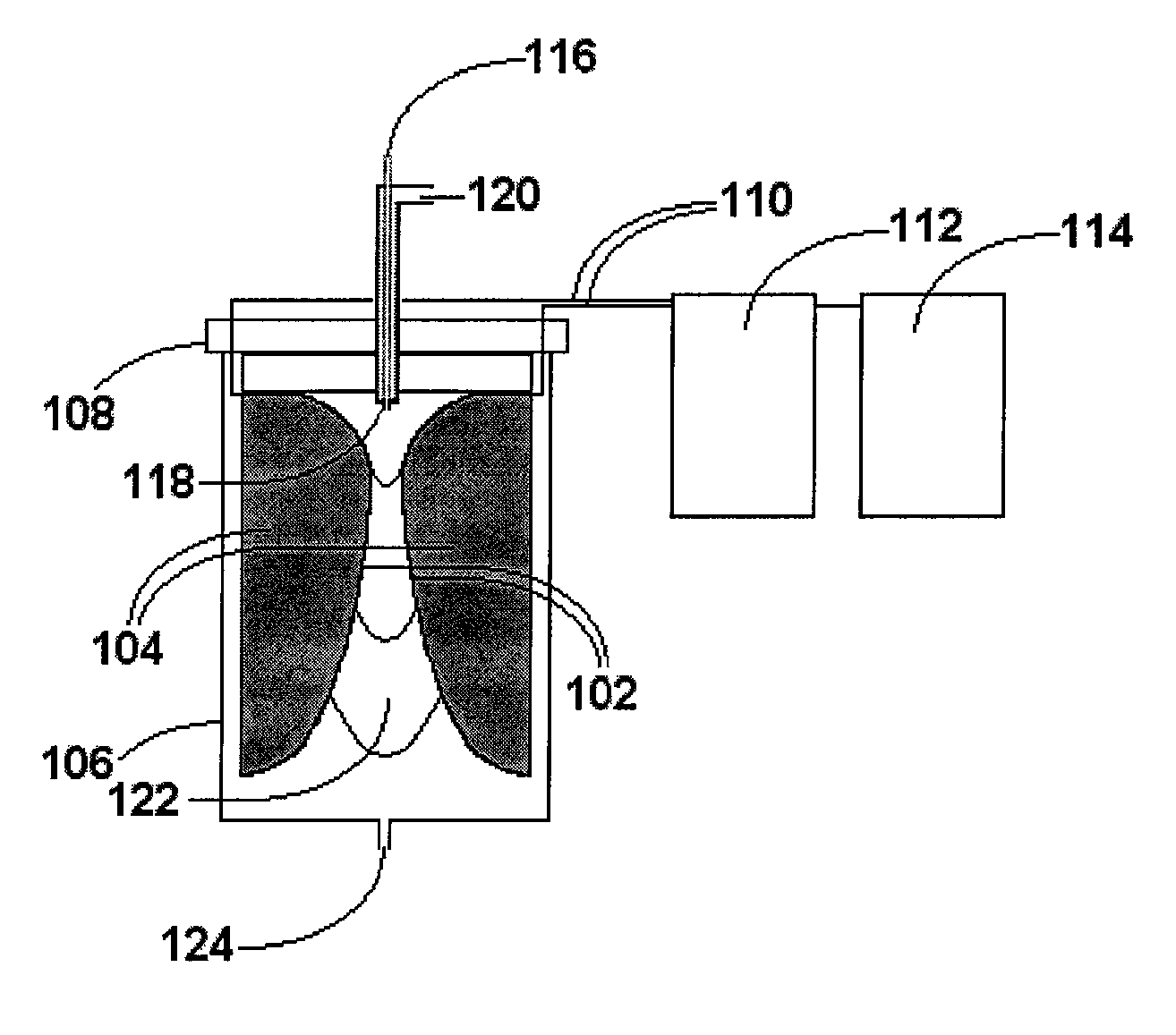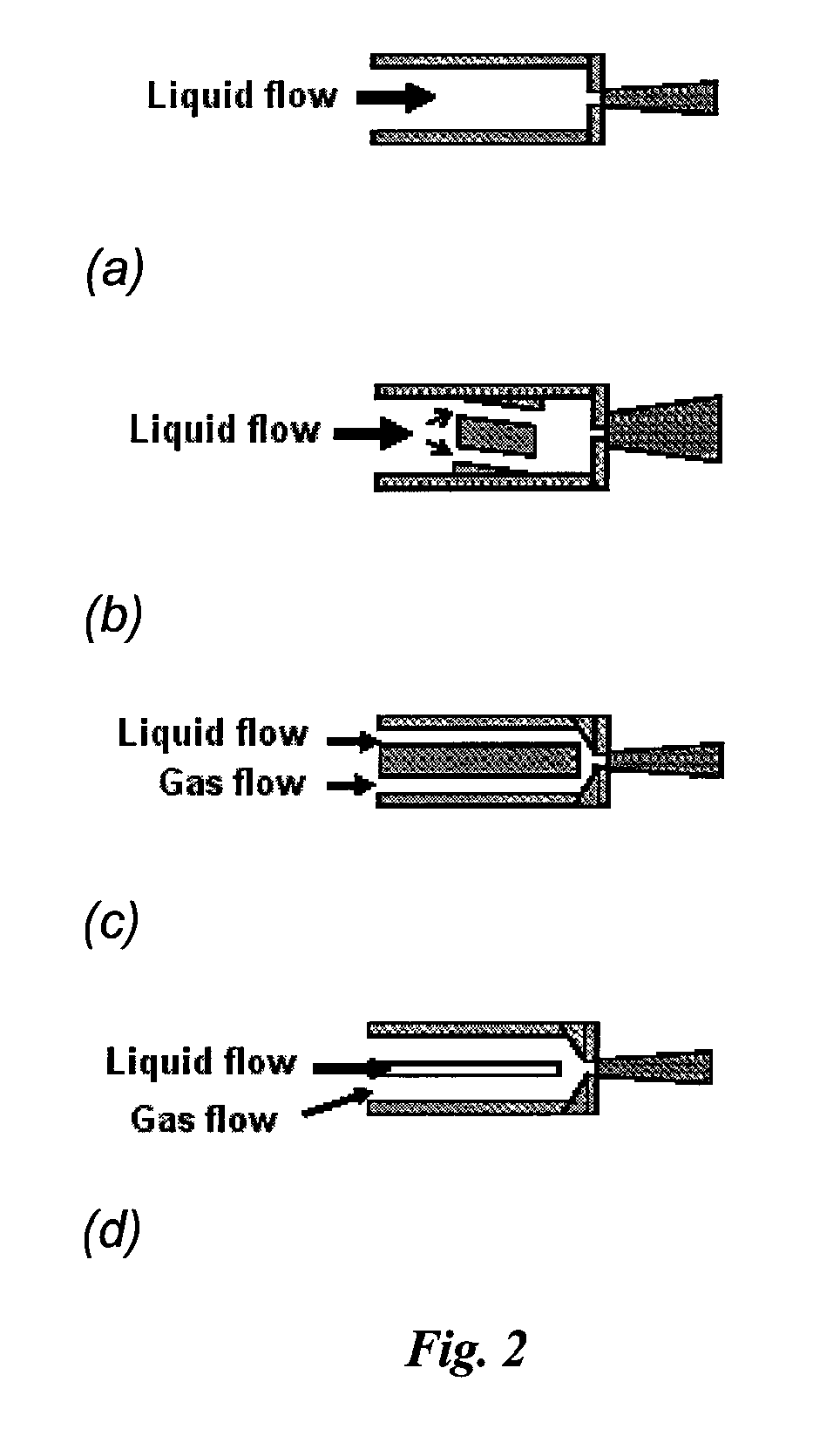Pulsed gliding arc electrical discharge reactors
a technology of electrical discharge reactor and gliding arc, which is applied in the direction of nitrogen oxide/oxyacid, chemical/physical/physical-chemical processes, nitric oxide, etc., can solve the problems of complex electrochemical processes, significant energy loss in both configurations, and the need for complex membrane and electrode systems
- Summary
- Abstract
- Description
- Claims
- Application Information
AI Technical Summary
Benefits of technology
Problems solved by technology
Method used
Image
Examples
example 1
Water was passed separately through the ACG reactor and the PGD reactor. The water displayed an initial pH of 5 and a conductivity of 10 μS / cm. The working gas was varied using individually air, nitrogen, oxygen and argon for each reactor. A quantity of 200 mL of water was used for each reactor and multiple passes were made for each 200 mL quantity through each reactor. Measurements of the solution parameters were carried out on the water after each pass.
For both reactors the evolution of the pH was similar. Using the ACG reactor the pH decreased from the initial value of 5 to a value of approximately 2.5 after four passes. Using the PGD reactor, the pH decreased from the initial value of 5 to a value of approximately 3 after four passes. The change in pH did not differ in a significant manner using different working gases.
The change in conductivity is shown in FIG. 4. The change in conductivity differed significantly with the two reactors. In the case of the ACG reactor, shown in F...
example 2
The treatment of aqueous solutions of the pentasodium salt of the dye blue 137,
was examined, separately using the ACG reactor and the PGD reactor. The working gas was varied using individually air, nitrogen, oxygen and argon for each reactor. A quantity of 200 mL of a 20 mg / L aqueous blue dye solution was passed multiple times through each reactor. Absorbance measurements of the dye were performed by UV spectroscopy using a Perkin-Elmer / Lambda 3A spectrometer after each pass and the measured absorbance was used to calculate a concentration by mass of the dye. The results of the blue dye degradation are presented in FIG. 7(a) for the ACG reactor and in FIG. 7(b) for the PGD reactor. As can be seen in FIG. 7(a), the degradation of the dye with the first pass was rapid, with at least fifty percent degradation on the first pass for all working gases, but highly dependent on the working gas composition. The degradation was most rapid in air and least rapid in argon. By the second pass li...
PUM
 Login to View More
Login to View More Abstract
Description
Claims
Application Information
 Login to View More
Login to View More - R&D
- Intellectual Property
- Life Sciences
- Materials
- Tech Scout
- Unparalleled Data Quality
- Higher Quality Content
- 60% Fewer Hallucinations
Browse by: Latest US Patents, China's latest patents, Technical Efficacy Thesaurus, Application Domain, Technology Topic, Popular Technical Reports.
© 2025 PatSnap. All rights reserved.Legal|Privacy policy|Modern Slavery Act Transparency Statement|Sitemap|About US| Contact US: help@patsnap.com



